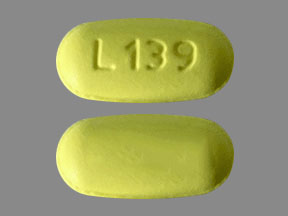
Clarithromycin Coupons & Savings Card – Discount Prices from $22.53
My prescription
Edit
250MG, Clarithromycin (30 Tablets)
Select pharmacy

CVS
$22.83
COUPON PRICE
Walgreens
$22.53
COUPON PRICE
Walmart
$23.22
COUPON PRICE
Albertsons
$32.93
COUPON PRICEFree Clarithromycin Savings Card

Walgreens
$22.53
Show this coupon to your pharmacist
ID
LHBADC2987
PCN
CHIPPO
BIN
019876
GRP
LHX
This coupon is not insurance
Related macrolide antibiotics prescriptions
More prescriptions for upper respiratory infection
Related macrolide antibiotics prescriptions
More prescriptions for upper respiratory infection
Clarithromycin dosage forms
Dosage Quantity Price from Per unit 250MG 30 Tablets $22.53 $0.75 250MG 60 Tablets $27.66 $0.46 250MG 90 Tablets $32.49 $0.36 500MG 30 Tablets $17.65 $0.59 500MG 60 Tablets $32.52 $0.54 500MG 90 Tablets $39.78 $0.44
| Dosage | Quantity | Price from | Per unit |
|---|---|---|---|
| 250MG | 30 Tablets | $22.53 | $0.75 |
| 250MG | 60 Tablets | $27.66 | $0.46 |
| 250MG | 90 Tablets | $32.49 | $0.36 |
| 500MG | 30 Tablets | $17.65 | $0.59 |
| 500MG | 60 Tablets | $32.52 | $0.54 |
| 500MG | 90 Tablets | $39.78 | $0.44 |
Clarithromycin Warnings
When using this medication, it is crucial to be aware of the following safety warnings and contraindications. These points highlight significant risks and necessary precautions. If you have any concerns, please consult your healthcare provider for guidance.
Severe Allergic and Skin Reactions: There is a potential for severe allergic reactions, including life-threatening conditions such as facial swelling and anaphylaxis. If you experience symptoms like hives, rash, swelling of the lips or tongue, or difficulty breathing, seek immediate medical attention. Inform your healthcare provider if you have a known allergy to antibiotics.
Liver Damage: Although rare, serious liver problems, including liver failure, have been reported. Be vigilant for symptoms such as abdominal swelling, stomach pain, yellowing of the skin or eyes, changes in stool color, nausea, vomiting, confusion, or dark urine. Prompt medical intervention may be required, and discontinuation of the medication might be necessary to prevent further liver damage.
Drug Interactions: Clarithromycin can interact with several other medications, leading to serious side effects. It is important to inform your healthcare provider about all medications you are currently taking, particularly colchicine, lomitapide, statins, certain diabetes medications, quetiapine, oral blood thinners, and benzodiazepines. Do not start new medications without consulting your provider or pharmacist.
Heart Rhythm Problems (QT Prolongation): This medication may affect heart rhythm, posing serious risks such as QT prolongation. The risk is heightened if you have abnormal electrolyte levels, existing heart rhythm issues, or are on other medications that affect heart rhythm. Symptoms like chest pounding, difficulty breathing, chest pain, or faintness require immediate medical attention.
Increased Risk of Death from Heart Problems: Though rare, there is a potential increased risk of death from heart problems in individuals with blood vessel-related heart disease taking clarithromycin. Discuss the risks and benefits with your provider, especially if you have underlying heart conditions.
Infectious Diarrhea: Clarithromycin can increase the risk of Clostridioides difficile infection, leading to severe diarrhea. Symptoms include rapid heart rate, foul-smelling diarrhea, fever, nausea, and frequent bowel movements. Seek immediate medical care if you experience these symptoms.
Worsening of Muscle Problems (Myasthenia Gravis): If you suffer from myasthenia gravis, clarithromycin may exacerbate symptoms like muscle weakness and breathing difficulties. Consult your provider about alternative antibiotics.
Contraindications: Avoid this medication if you have:
- A severe allergy to macrolide antibiotics.
- Severe liver issues from previous clarithromycin use.
- Are taking pimozide, lovastatin, simvastatin, lomitapide, lurasidone, or ergot derivatives.
- Renal or liver problems and are on colchicine.
Ensure you discuss these factors with your healthcare provider to determine if this medication is suitable for you.
Clarithromycin Side Effects
Common side effects:
- Diarrhea
- Nausea
- Vomiting
- Headache
- Stomach pain
- Changes in taste
- Indigestion
Less common but important to monitor:
- Difficulty sleeping
- Rash
- Signs of a fungal infection like oral thrush
- Changes in vaginal discharge
Serious side effects:
- Severe allergic reactions
- Yellowing of the skin or eyes
- Dark urine
- Severe abdominal pain
- Serious intestinal condition caused by C. difficile
- Abnormal heart rhythms
- Chest pain
- Pounding heart
- Feeling faint
- Severe dizziness
- Trouble breathing
Clarithromycin Interactions
Interactions with high risk of serious adverse effects and should be avoided:
- Alfuzosin
- Alprazolam
- Astemizole
- Bepridil
- Cisapride
- Colchicine
- Conivaptan
- Dihydroergotamine
- Dronedarone
- Eletriptan
- Eliglustat
- Eplerenone
- Ergoloid Mesylates
- Ergonovine
- Ergotamine
- Flibanserin
- Fluconazole
- Isavuconazonium Sulfate
- Ivabradine
- Ketoconazole
- Lomitapide
- Lovastatin
- Lurasidone
- Maraviroc
- Mesoridazine
- Methylergonovine
- Methysergide
- Naloxegol
- Nelfinavir
- Nimodipine
- Pimozide
- Piperaquine
- Posaconazole
- Ranolazine
- Saquinavir
- Silodosin
- Simvastatin
- Sparfloxacin
- Terfenadine
- Thioridazine
- Tolvaptan
- Ubrogepant
- Venetoclax
- Voclosporin
- Ziprasidone
Interactions with moderate risk that may require dose adjustment, closer monitoring, or timing changes:
- Amiodarone
- Disopyramide
- Dofetilide
- Pacritinib
- Procainamide
- Quinidine
- Sotalol
- Efavirenz
- Nevirapine
- Rifamycins (such as rifabutin)
- Sildenafil
- Tadalafil
- Tamsulosin
- Ticagrelor
